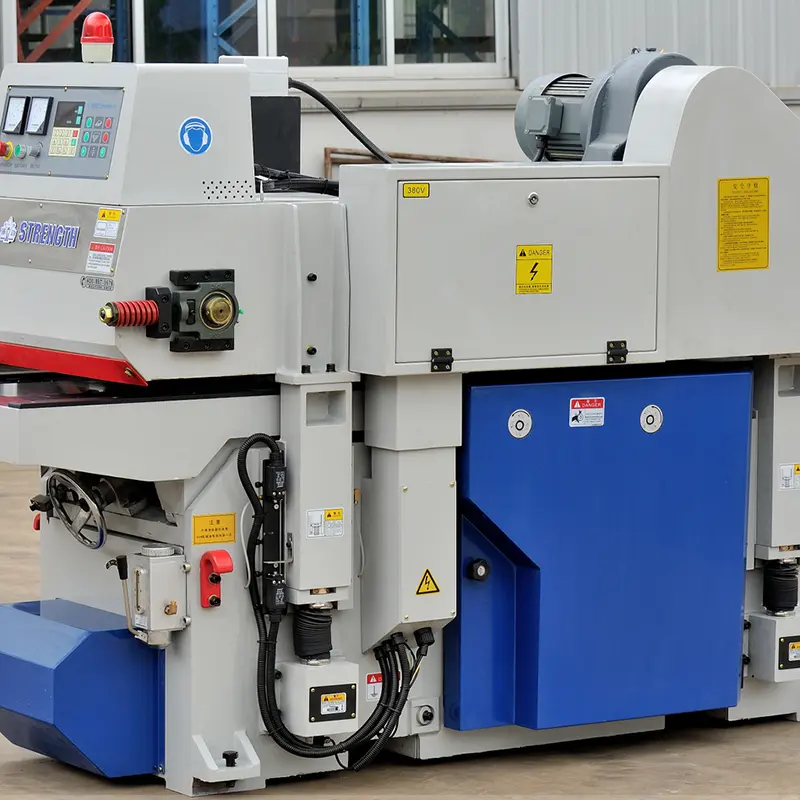Automation of planers: opening a new era of metal processing
Against the backdrop of today’s rapid manufacturing industry, automation technology is profoundly changing the traditional mechanical processing field. As an important metal processing equipment, the automation upgrade of planers has become the key to improving production efficiency, processing accuracy and reducing labor costs. This article will explore in depth the aspects of automation of planers and how these automation features can bring value to international wholesale buyers.
1. Definition and background of automated planers
A planer is a machine tool used for metal processing. Its main function is to plan metal workpieces to achieve the required size and shape. Traditional planer operations rely on manual control, which is inefficient and the processing accuracy is greatly affected by the operator’s technical level. With the development of automation technology, automatic planers have emerged. By introducing advanced CNC technology, sensor technology and automated control systems, it has realized the automation and intelligence of the processing process.
2. Aspects of planer automation
(I) Application of CNC technology
CNC technology is the core of planer automation. Through the CNC system, operators can pre-write processing programs and input parameters such as processing paths, feed speeds, and cutting depths into the system. The CNC system can accurately control the movement of the tool to ensure high precision and high efficiency of the processing process. For example, Guangdong CNC slotting machine adopts advanced CNC technology, and realizes the automation and intelligent control of the processing process through precise programming and control system. The application of this CNC technology enables the processing accuracy to reach the micron level, meeting the needs of precision processing, while also improving the processing efficiency and reducing the idle travel time.
(ii) Tool holder automatic feeding system
The tool holder automatic feeding system is an important part of the automation of the planer. The traditional planer tool holder feeding requires manual operation, which is inefficient and difficult to guarantee accuracy. The tool holder feeding system of the modern automatic planer is automatically controlled through PLC (programmable logic controller) and frequency converter. For example, the tool holder automatic feeding system of the gantry planer can automatically adjust the tool holder feeding speed and feed amount according to the preset parameters, and the operator only needs to make simple settings through the control panel. This automatic feeding system not only improves the processing efficiency, but also greatly reduces the labor intensity of the operator.
(iii) Processing path optimization
Automated planers can automatically optimize the processing path through the CNC system. The traditional planer processing path requires the operator to plan based on experience, which often has the problem of low efficiency. The CNC system of the automatic planer can automatically calculate the optimal processing path according to the shape and size of the workpiece, reduce unnecessary idle strokes, and improve processing efficiency. For example, when processing workpieces with complex shapes, the CNC system can automatically adjust the tool’s motion trajectory to ensure the continuity and efficiency of the processing process.
(IV) Remote control and monitoring
With the development of Internet of Things technology, modern automatic planers have remote control and monitoring functions. Operators can operate and monitor them far away from the machine tool through network connections. This remote control function not only improves the flexibility of operation, but also enhances the safety of operation. For example, in some dangerous environments or inconvenient operations, operators can complete processing tasks through remote control.
(V) Automatic loading and unloading system
In order to further improve production efficiency, some advanced automatic planers are equipped with an automatic loading and unloading system. The system can automatically feed the workpiece to be processed into the machine tool and take out the finished product after processing. This automatic loading and unloading system greatly reduces manual intervention, improves production efficiency, and also reduces the labor intensity of operators.
3. Advantages of automated planers
(I) Improve production efficiency
Automated planers significantly improve production efficiency through CNC technology, automatic tool holder feeding system and processing path optimization. Compared with traditional planers, automatic planers can complete more processing tasks in a shorter time, thus meeting the needs of large-scale production.
(II) Improve processing accuracy
The precise control of the CNC system and the stability of the tool holder automatic feeding system enable the automatic planer to achieve high-precision processing. The improvement in processing accuracy not only improves the quality of the product, but also reduces the scrap rate caused by processing errors.
(III) Reduce labor costs
The widespread application of automated planers reduces dependence on manual operation. Operators do not need to stay at the machine tool for a long time to perform manual operation, but only need to perform simple programming and monitoring. This automated operation mode reduces labor costs and also reduces the labor intensity of operators.
(IV) Enhance operational safety
The application of remote control and monitoring functions and automated loading and unloading systems allows operators to stay away from dangerous areas, thereby enhancing the safety of operations. This safety improvement is crucial to ensuring the personal safety of operators.
4. Market prospects of automated planers
With the continuous development of the manufacturing industry, the demand for efficient and high-precision processing equipment is growing. With its significant advantages, automated planers are gradually replacing traditional planers and becoming an important equipment in the field of metal processing. For international wholesale buyers, choosing automated planers can not only improve production efficiency and product quality, but also reduce production costs and enhance market competitiveness.
5. Summary
The automation of planers is an important trend in the development of the manufacturing industry. Through the application of CNC technology, automatic feed system of tool holder, processing path optimization, remote control and monitoring, and automated loading and unloading system, automated planers have shown significant advantages in improving production efficiency, improving processing accuracy, reducing labor costs, and enhancing operational safety.
Post time: Jul-14-2025

